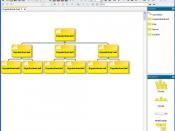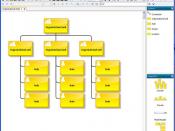Organizational behavior is the systematic study and careful application of knowledge about how people, as individuals and as groups, act within an organization. Organizational behavior has evolved from early classical management theories into a complex school of thought-and it continues to change in response to the vibrant environment and growing corporate cultures in which today's businesses operate (2008, Wikipedia.org). It is challenging to understand a person's behavior, so there must be the capacity to understand patterns of behavior. If patterns of behavior are understood at individual, group, and organizational levels, then it is easier to predict which behaviors will be elicited by different managerial actions. Ultimately the work of organizations gets done through the behavior of people, individually or collectively, on their own or in collaboration with technology. The behaviors of the people and organization set the path for what the culture of the organization will be like.
Organizational culture is the specific collection of values and norms that are shared by people and groups in an organization and that control the way they interact with each other and with stakeholders outside the organization (2008, Wikipedia.org).
Organizational culture is one of the primary responsibilities of strategic leaders to create and maintain characteristics that reward and encourage collective efforts by the employees. An organization's culture develops to help it cope with its environment. A leader's success will depend, to a great extent, upon understanding organizational culture. Many leaders, when trying to implement new strategies or a strategic plan leading to a new vision, will discover that their strategies will fail if they are inconsistent with the organization's culture (2008, University, National Defense).
Most organizations will provide Equal Employment Opportunity to applicants that reflect the diversity of employees without regard to their national origin, race, color, religion, age, gender, marital status, sexual...


